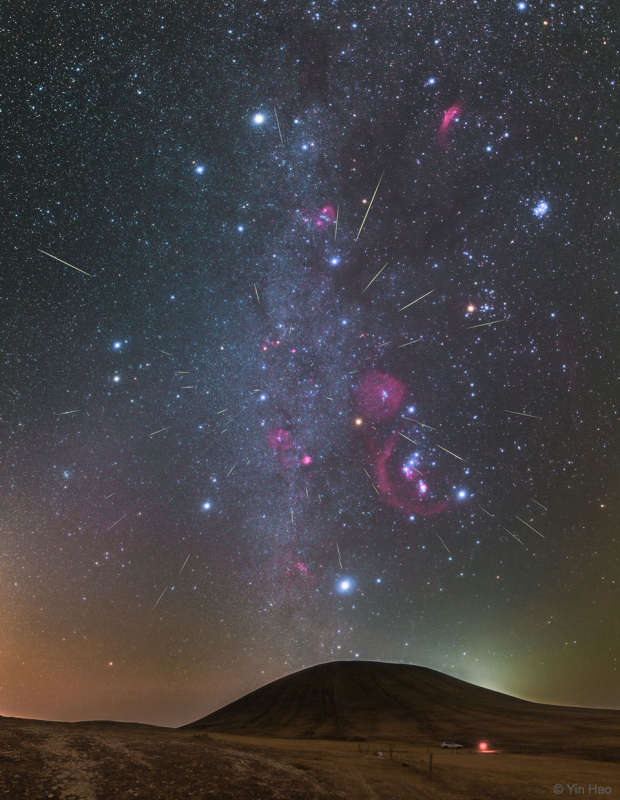Credit & Copyright: Yin Hao
Explanation:
Meteors have been shooting out from the constellation of Orion.
This was expected, as October is the time of year for the
Orionids Meteor Shower.
Pictured here, over two dozen meteors were caught in successively
added exposures last October over
Wulan Hada volcano in
Inner Mongolia,
China.
The featured image shows
multiple meteor streaks
that can all be connected to a single small region on the sky called the
radiant,
here visible just above and to the left of the
belt of Orion,
The Orionids
meteors started as sand sized bits expelled from
Comet Halley
during one of its trips to the inner
Solar System.
Comet Halley is
actually responsible for two
known meteor showers,
the other known as the
Eta
Aquarids and
visible every May.
An Orionids image featured on
APOD
one
year ago today from the same location shows the same
car.
Next month, the
Leonids Meteor Shower
from Comet Tempel-Tuttle should also result in
some bright meteor streaks.
Follow APOD on:
Facebook,
Instagram,
Reddit, or
Twitter
1999 2000 2001 2002 2003 2004 2005 2006 2007 2008 2009 2010 2011 2012 2013 2014 2015 2016 2017 2018 2019 2020 2021 2022 2023 2024 2025 |
Yanvar' Fevral' Mart Aprel' Mai Iyun' Iyul' Avgust Sentyabr' Oktyabr' Noyabr' Dekabr' |
NASA Web Site Statements, Warnings, and Disclaimers
NASA Official: Jay Norris. Specific rights apply.
A service of: LHEA at NASA / GSFC
& Michigan Tech. U.
|
Publikacii s klyuchevymi slovami:
meteor - Orion - Meteor - Meteornyi potok - Orion - orionidy
Publikacii so slovami: meteor - Orion - Meteor - Meteornyi potok - Orion - orionidy | |
Sm. takzhe:
Vse publikacii na tu zhe temu >> | |
